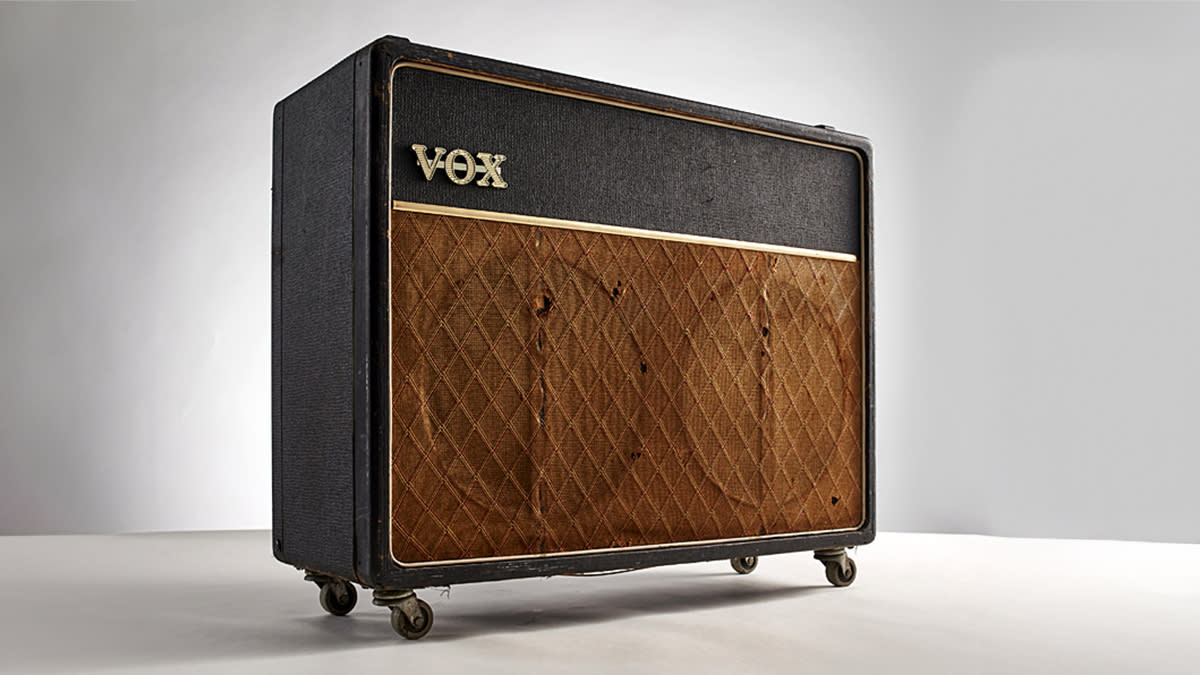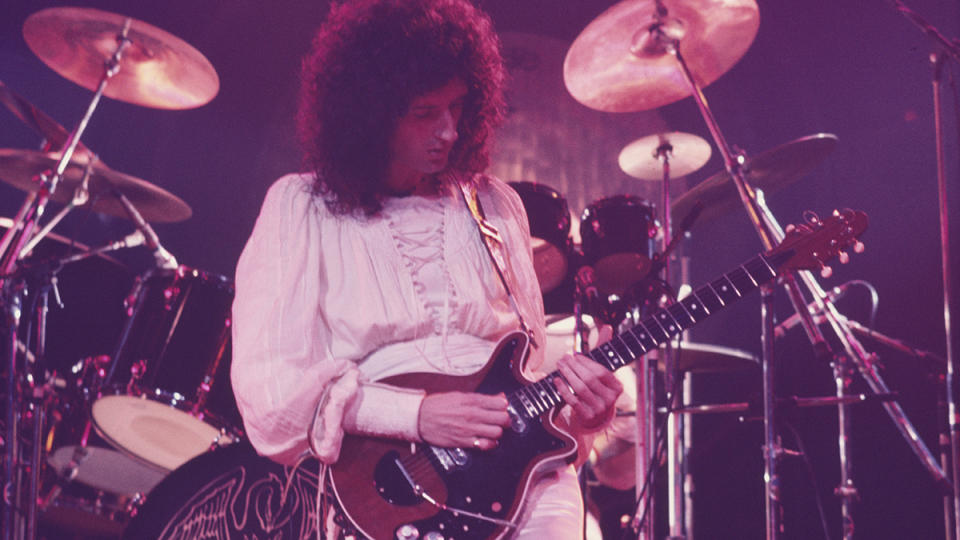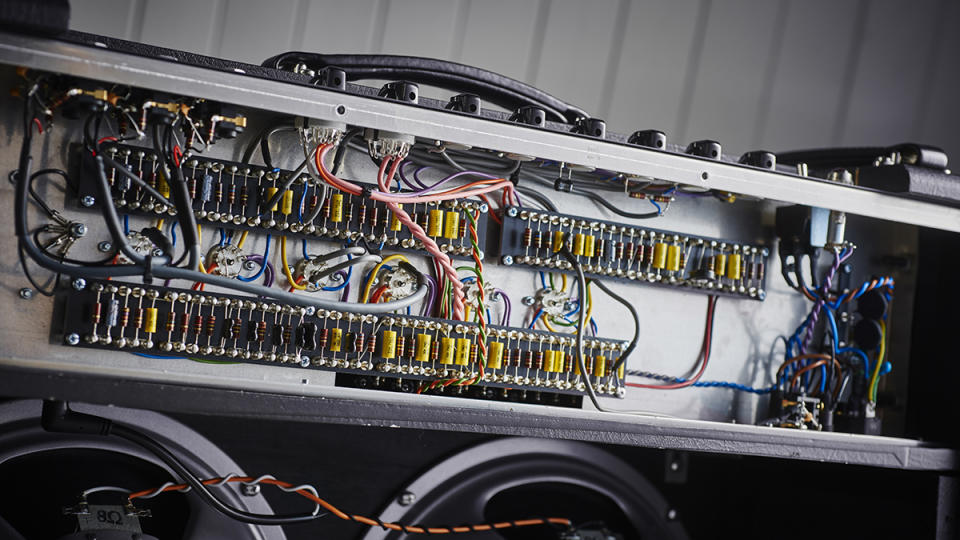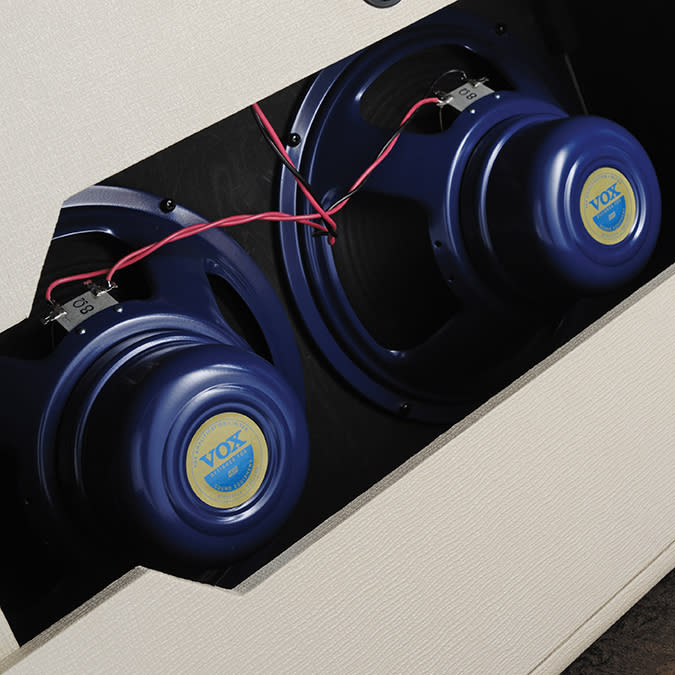Used by The Beatles and Brian May, the Vox AC30 is one of the all-time great amps – what makes it sound so good?

Mention the term “British clean” to any discerning guitar fan and the Vox AC30 will immediately spring to mind. The highly coveted tube amp has been championed by generations of musicians, and is behind the emergence of entire genres and tones while in the hands of the countless artist who have embraced it.
Tracing the AC30's sonic trail across its illustrious 65-plus-year history reveals its timeless allure is no mere coincidence.
The Vox Amplifiers name was first etched onto an amp in 1958. Amp designer and guitarist Dick Denney was plugged in to the rapidly evolving world of electric guitar technology in the late '50s.
He brought his specialist knowledge to JMI Corporations – the original owner of the Vox brand – and produced the Vox AC1/15, which was later renamed the AC15. Denney's amp design offered guitarists a notable presence and volume that cut through on stage, becoming a staple of the UK music scene.
As music delved into the rock 'n' roll era, larger venues and enthusiastic crowds demanded increased on-stage volume. Denney took it up a notch, literally cranking up the design by doubling the AC15's components. The Shadows and a young Beatles, fresh from their Hamburg residencies, were some of the first acts to hit the road with AC30s.
The Vox name gained spotlight on stage and earned its reputation as the quintessential guitar amp brand of the British Invasion.
Who plays Vox AC30 amps?

The distinctive jangly guitar tones of the '60s from the likes of the Beatles, Shadows, Hank Marvin, and the Kinks all came from the Vox AC30. As the '70s unfolded, the rapid adoption of effects pedals gave the amp a fresh voice.
In this era, Brian May utilized his self-made "Red Special" guitar alongside a Rangemaster Treble Booster pedal, crafting his famous ultra-treble tones that highlighted the AC30's sparkling high frequencies.
"The Vox AC30 works in a different way from most guitar amps," May once observed in an interview with Total Guitar. "It does give you that smooth transition into compression and distortion, which to me is just the voice that I always wanted."
His affinity for the amp further solidified the status of the AC30, which had already gained a reputation as a go-to amp for guitarists.
Then, during the '80s digital revolution, The Edge of U2 seamlessly integrated his AC30 with cutting-edge pedal technology, incorporating the Electro Harmonix Deluxe Memory Man – among many other effects – to craft bright, attack-heavy, digitally delayed guitar layers.
In a different musical realm, jazz virtuoso John Scofield, known for his versatile and responsive musicality, embraced the AC30 for its bite and capacity to cut through the mix in both live and studio settings.
What tubes does the AC30 use?

With a significantly higher output, the AC30 utilized four of the EL84 tubes commonly found in record player power amp stages. With the help of additional ECC83 (12AX7) preamp tubes, the amp circuit signal is gain-staged to have enough headroom for clean tones, but easily break up when pushed.
As it reaches higher volumes, the AC30 gets pushed into saturation, accentuating the amp’s colorful midrange of spikey frequencies.
In the 1960s, amplifier wattage was measured at its clean headroom limit before tube breakup. Therefore, despite the 30-watt output of an AC30 appearing unassuming by today’s standards, these amps can reach surprisingly loud levels.
What does an AC30 sound like?
Even today, compared to its historical counterparts in Fender and Marshall, the Vox AC30 maintains an unmistakable character absent in the open cleans of a Twin or the roundness of a JTM45.
Renowned for its honky midrange and sparkling high-end frequencies, the AC30 excels in cutting through dense mixes, providing guitarists with clarity in both live settings and recordings.
The initial lack of low-end at lower volumes might dissuade some players seeking the warmth often found in other amps. This effect is more pronounced in the top boost versions and when attempting to replicate the Brian May-inspired technique of pairing the AC30 with a Treble Booster.
However, with increased volume – even with the top boost maximized for full jangle – the lower frequencies progressively fill out.
What speakers does an AC30 use?

The original AC30s initially featured Jensen Alnico Blue speakers, later replaced by Celestion Greenbacks to cut manufacturing costs. Consequently, some of the iconic tones heard on '60s records owe their character to the Alnico Blue speakers.
AC30s with Alnico Blue speakers are often preferred for their cleaner, subtly rolled-off tone compared to the Greenbacks, which contribute to the perception of AC30s having a slightly harsh character.
As both speaker types are pushed to higher volumes, the distinctions become more pronounced. The Alnico Blue speakers respond with an increased bell-like top end and natural compression at high volumes, setting them apart from Greenbacks and delivering the sought-after, authentic tone associated with '60s records.
What's the best AC30?
Nashville guitarist Jim Lill, renowned for his session work and YouTube channel debunking tonal myths, explored speaker cabinet tone in his video, "Where Does Tone Come From in a Speaker Cabinet?".
Lill noted a manufacturing difference in vintage and reissue AC30s – namely, the presence of cross-shaped wooden planks in front of the speakers on vintage models that are absent in reissues. Through an A/B test using his custom-built cabinets, Lill demonstrated how these wooden crosses significantly roll off the speaker cabinet’s top end.
Perhaps these wooden crosses play a more defining role in capturing the sought-after '60s vintage tone than one might first expect.
To capture an authentic '60s AC30 tone, speaker types and how closely a reissue aligns with the original design are pivotal considerations. When contemplating a purchase, a balance must be found between the pursuit of the holy grail tone and the challenges of owning a potentially pricey and finicky vintage amp.
Mason Mangela of Vertex Effects points to amps from the brand's Korg era, spanning from the mid-'90s to the early 2000s, as the closest modern reissues to faithfully capture the original 1960s JMI circuit with the top boost channel.
While multiple factors contribute to the elusive AC30 tone, a closer examination reveals more variables. Yet, the instantly recognizable sound remains consistent across numerous amp models.
Regardless of sought-after periods or eras, plugging into an AC30 ensures a unique and unparalleled tonal experience, making it a distinctive addition to any amplifier collection.

